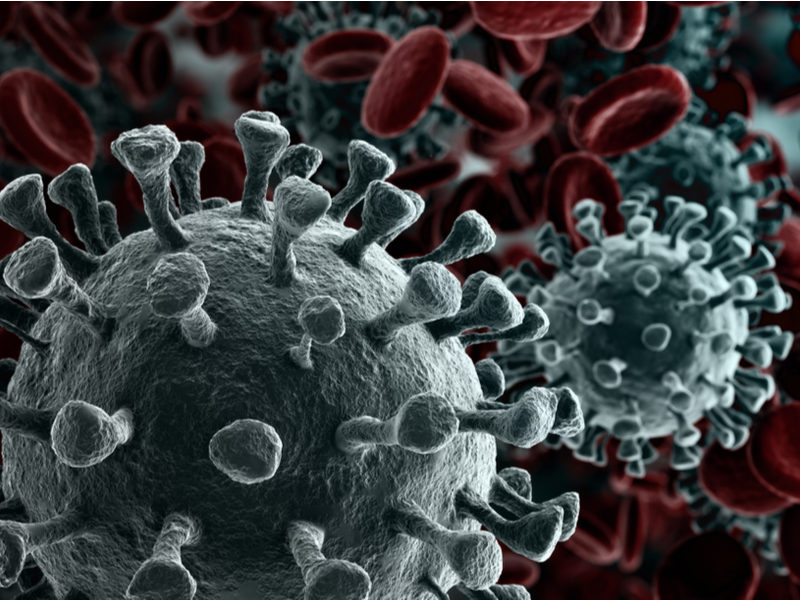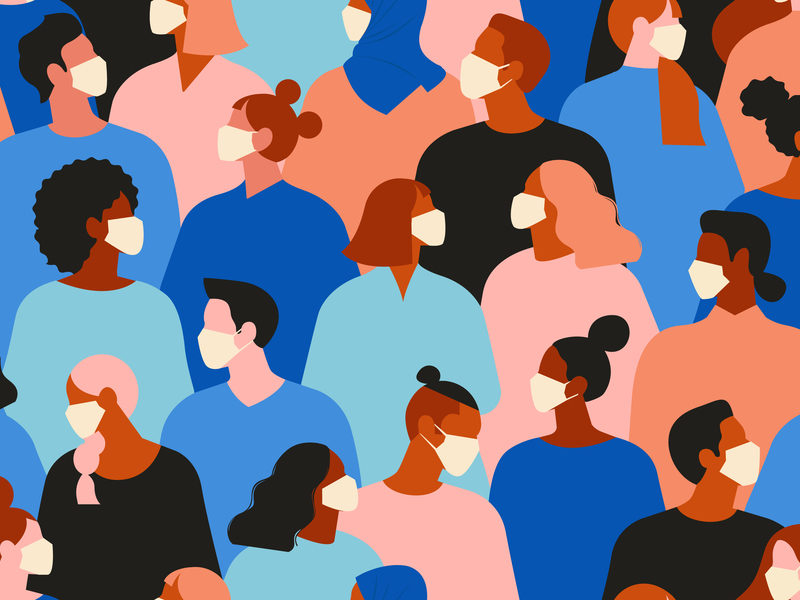Coronavirus Pandemic 2020: Everything You Need to Know
The world is at a standstill. An outbreak of respiratory disease by a novel strain of coronavirus has turned into a global pandemic. They traced the origin of the COVID-19 outbreak to Wuhan, a small town in Hubei Province, China. It has infected hundreds of thousands.
Last March 11, the World Health Organization (WHO) declared a global pandemic with 90 percent of the world’s cases in four countries — China, Italy, Iran, and South Korea.
They named the virus “SARS-CoV-2,” with the strain’s similarities to the SARS-COV responsible for the outbreak in 2003. The disease that SARS-COV-2 causes is now the “Coronavirus Disease 2019” (COVID-19).
What is Coronavirus?

According to WHO, coronaviruses (CoV) are strains of viruses that cause common, mild illnesses like the common cold and seasonal flu.
However, they are also responsible for some of the world’s most severe outbreaks such as the Middle East Respiratory Syndrome (MERS-CoV) in 2012 and the Severe Acute Respiratory Syndrome (SARS-CoV) in 2003. Now the Coronavirus 2020 pandemic is decapitating entire nations.
Coronaviruses are zoonotic, which means transmission can happen between animals and humans. Some strains originate from wild animals and infect humans that come into direct contact with the animal or consume it. This leads to the possible compromise of public health and safety.
Several known coronaviruses are present in animals that are not infectious to humans, but studies show that strain mutations are possible and might lead to more unprecedented outbreaks that spread from person to person if containment is not done early.
COVID-19 is a new strain of respiratory virus previously unknown to infect humans but first broke out and spread rapidly throughout mainland China. Soon after, the virus started to make its way into countries as far as the United States on the other side of the world because of unrestricted travel and trade.
Currently, there are no vaccines or cures readily available to combat this novel coronavirus. However, experts are administering treatments for managing mild to severe symptoms and boosting the immune system until the human body can fight off the virus on its own.
Coronavirus Symptoms
The Centers for Disease Control and Prevention have begun coronavirus testing among those showing symptoms. Using specialized test kits, they can test those with a travel history to places with confirmed cases.
Symptoms observed in persons who tested positive with COVID-19 include high fever, dry cough, shortness of breath, and breathing difficulties. These symptoms are also common in colds, allergies, and the flu, which makes it difficult to pinpoint if one is infected or not.
The severity of these symptoms may vary per patient. About 80% of reported cases are not severe, most just need self-isolation and the proper medication to address their symptoms and boost the immune system.
Health workers observed that the virus could be deadly to those with comorbidity or people who have two or more than chronic illnesses present, especially respiratory illnesses. Persons who are immunocompromised are at higher risk of being infected as well.
There are also cases of asymptomatic patients, infected persons who do not show any of the aforementioned symptoms related to COVID-19. Scientists and researchers all over the world are tripling efforts in finding a vaccine and a possible cure.
Coronavirus Outbreak: Global Pandemic
Coronavirus Outbreak: Philippines
The Philippine Department of Health (DOH) reported the first case of a COVID-19 infected individual in the country on January 30, 2020. The 38-year-old female Chinese national flew to the country from mainland China.
On March 7, the first local transmission of the virus was confirmed. As of publication, the DOH has reported that at least 200 have been infected by the virus with 17 fatalities.
“Enhanced community quarantine” has been imposed by the government in the National Capital Region as of March 16, for strict compliance. Citizens are to stay at home and observe home quarantine until the 14th of April.
Many are expressing their grievances toward this as the government has not yet issued a statement regarding the sustainability of this quarantine, especially for families way below the poverty line.
Coronavirus Outbreak: China
Many of the patients at the epicenter of the outbreak in Wuhan, China were connected to seafood and live animal markets, suggesting that the origin of the outbreak is due to wild animal consumption. Reports say the first cases emerged in late November of 2019.
Not long after, the viral and highly infectious disease made its way to larger and more condensed cities in China. China did not stop international flights early enough to contain the disease within the country.
As of March 15, the National Health Commission reports over 80,000 positive cases and a little over 3,000 deaths in 31 provincial-level regions of China. Over half a million people were identified as having had close contact with infected COVID-19 patients.
Coronavirus Outbreak: Italy
As the second country with the most number of positive cases, Italy reports some 300 new fatalities from the outbreak. The country’s death toll hit 1,809 while the number of positive cases continues to rise by the thousands.
To prevent the spread of the coronavirus, authorities placed Northern Italy under total lockdown. This lockdown affects nearly 16 million people and covers 14 Italian provinces.
The rules of the lockdown include the closure of universities, theaters, bars, and nightclubs in Northern Italy. Public ceremonies such as sporting events, weddings, and even funerals have to be either suspended or postponed.
Essential stores such as markets remain open on limited hours during weekdays, from 6 am to 6 pm. This applies so long as goers could practice social distancing. It requires a meter (three feet) in between each person.
As of writing, over 1,800 people have died due to the coronavirus. Italy’s death rate is second to China.
Coronavirus Outbreak: Iran
Iran reports more than 100 people have died from the coronavirus. The number of infected patients is nearing 14,000. Dr. Tehran from the WHO said that Iran’s fight against coronavirus is being severely hampered by U.S. sanctions.
Governments around the world have stepped up restrictions and travel bans on the movement of their citizens to reduce the spread of the COVID-19 pandemic, going so far as to implement complete lockdowns on their nations.
Coronavirus Outbreak: USA
As of writing, there are close to 4,000 confirmed cases of COVID-19 in the United States, but experts fear that the small percentage of confirmed infected patients is due to the lack of testing kits available for nationwide mass testing.
The U.S. Healthcare System is taking a hit as the number of cases rises each day and with limited medical supply. Another factor is the willingness of citizens to get tested because of hospital bills insurance providers may not cover.
Coronavirus Prevention

A way to prevent the spread of COVID-19 is to know how it spreads. While there is currently no vaccine available to cure COVID-19, experts do know that the virus spreads from person to person.
This means that coming into contact with another person who is carrying COVID-19 increases the likelihood of infection. Thus, preventive measures include social distancing.
Practice social distancing
Authorities are advising that people put at least three feet between them and another person. Social distancing also means avoiding large and mass gatherings where the likelihood of catching the virus is high.
The virus can also spread through respiratory droplets through coughs and sneezes. Cover your mouth and wash your hands thoroughly afterward and avoid people who are showing symptoms of COVID-19.
It also would not hurt to take further steps to protect yourself and your loved ones from infection. It’s important to wash your hands often, as well as wiping down items that you frequently touch around the household.
Clean hands thoroughly and often
Wash your hands with soap and water for at least 20 seconds. When washing hands, it’s important to get areas under the fingers.
If water and soap are not available, using hand sanitizer or alcohol would suffice. To be effective, your hand sanitizer needs to contain at least 60% alcohol.
Take a liberal amount and rub your hands thoroughly until they are dry.
Avoid touching your face
Even if you think your hands are clean, it’s best to keep it away from your face. Avoid touching your eyes, nose, and mouth.
This is easier said than done as the everyday person touches their face more than 20 times per hour on average.
The reason experts are asking people to avoid touching their face is that the hands contain pathogens from touching objects such as doorknobs, cellphones, and keypads.
Touching the face with dirty hands provides the bacteria a clear pathway to the throat and lungs.
Disinfect frequently touched items
In addition to keeping yourself clean, it also helps to wipe down your household items daily. This goes especially for frequently-touched items like doorknobs, light switches, countertops, and cellphones, among other things.
Using a solution with 60% alcohol is enough to disinfect your everyday items. Taking time to clean your house reduces the risk of the virus infecting you and the people you live with.
Stay home if you are sick
If you are feeling under the weather, practice self-quarantine and stay at home to avoid catching the coronavirus disease. Do not go outside of the house to go to work, school or public areas. A compromised immune system increases the risk of becoming infected with the coronavirus.
Monitor your symptoms and see whether what you are experiencing is a possible case of COVID-19 or not.
If you are experiencing worsening symptoms of COVID-19, call your doctor before heading out. Additionally, wear a facemask when you are around other people. This applies especially if you are sharing a room or are in the same vehicle.
People, especially older adults, who have underlying medical conditions are at higher risk of experiencing complications from COVID-19. It is important to get medical attention immediately if you are suspecting COVID-19 infection.
For more news about the novel coronavirus click here.
What you need to know about Coronavirus.
For more information on COVID-19, call the DOH Hotline: (02) 86517800 local 1149/1150.
The Inquirer Foundation supports our healthcare frontliners and is still accepting cash donations to be deposited at Banco de Oro (BDO) current account #007960018860 or donate through PayMaya using this link.














